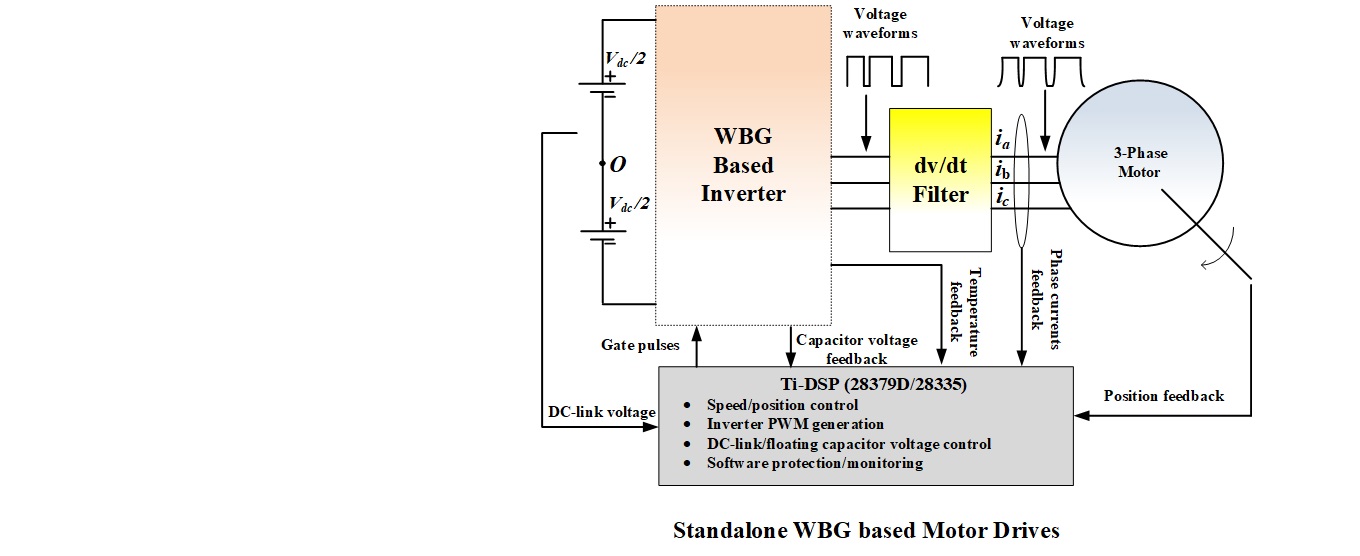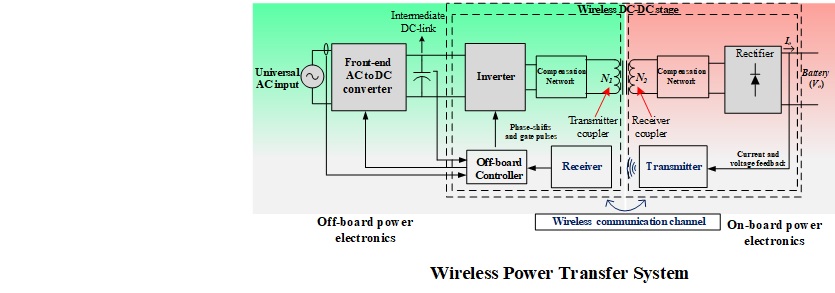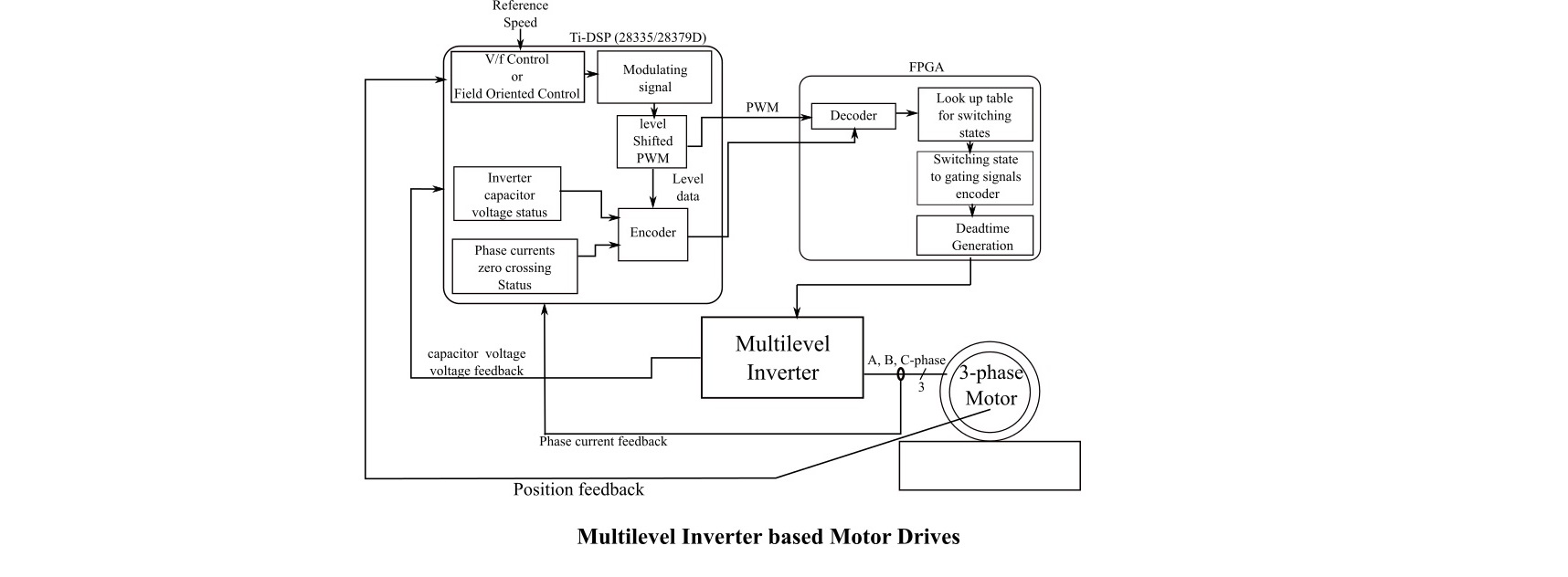Research
Motor drives with Wide-bandgap (WBG) devices
Induction motor drives
Multilevel inverters
Multiphase motor drives
Static Wireless Power Transfer
Dynamic Wireless Power Transfer
Wide-bandgap enabled converters
My current research is broadly summarize into three topics
WBG Based Motor Drives
The thrust in achieving high performance and efficient transportation electrification (electric vehicles, avionics, shipboard power supply etc.) and industrial systems have garnered the researcher’s attention in using the wide-bandgap (WBG) based devices. This is primarily due to two reasons. Firstly, the superior material properties (higher breakdown field, bandgap and thermal conductivities, and lower Rdson vs breakdown voltage) of WBG devices result in higher efficiency and power density than its Si counterpart.
Secondly, the applications such as direct drives and high-speed drives that operate at the high fundamental frequency require the switching frequency of the power electronic converter used for motor drives in several tens of kilohertz.
 |
But the incredible fast switching speed of the WBG devices imposes a lot of dv/dt (exceeding 80 to 100V/ns in some cases) related stress on the motor stator winding insulations and motor bearing. Moreover, the larger dv/dt also impacted both EMI and EMC performance of the drive. Therefore, it is a challenge to reduce the dv/dt stress along with the high-efficiency operation. Thus, this part of the research is focussed on the investigation and developing the methods to reduce the dv/dt stresses without affecting the efficiency of the system.
Wireless Power Transfer
The wireless power transfer has become very popular in recent times for electric vehicle (EV) charging due to their convenience, full autonomy, safety and EV range improvements. Among wireless charging methods, the wireless power transfer using the magnetic field is widely used, which is also called inductive power transfer (IPT). IPT systems are currently researched for a wide range of applications, including charging electric vehicles, autonomous robots, unmanned aerial vehicles, and autonomous guided vehicles, etc. But, for high power charging solutions with power level > 3.3kW, the size and weight of the wireless coils are the major limiting factor. Further, the size and weight of the system also get affected by the methods used for shielding leakage fields. Dynamic wireless charging or in motion vehicle charging is also one of the challenging areas.
 |
Thus, this part of the research will include studies on multiphase wireless power transfer, dynamic wireless transfer, and new electromagnetic structures (magnetic couplers). Further, intensive research on circuit topologies and controlling strategies will be performed. The new electromagnetic structures will be developed, which will improve the efficiency during large misalignments and reduce the size and weight of the IPT systems. Multiphase wireless power transfer (MWPT) for high power applications will be investigated to improve the power and gravimetric density of the magnetic couplers. In addition, the use of MWPT will be studied for dynamic wireless power transfer (on-road battery charging). The research will also be focused on the attenuation of the leakage field using innovative field shielding methods which do not affect the original field distribution and self-inductance of the coil.
Multilevel Inverter Based Motor Drives
The high power medium voltage motor drives require high performance and efficient operation, which are highly influenced by the power electronic converter used for motor drives. Primarily, there are two methods to increase the efficiency and performance of the power electronic converter used for motor drives. Firstly include the use of multilevel inverters (MLI) operating at high switching frequencies (ranging from 2 to 20kHz), which shifts the harmonics to high switching frequencies and avoids bulky and heavy low-order harmonic filter requirement. Secondly include the use of the switched capacitive filter, which enables the operation of the main inverter at the low switching frequency. In this approach, the harmonics generated by the main inverter are cancelled by the switched capacitor filter. Thus, it helps avoid the bulky and heavy low-order harmonic filters but increases the system complexity and component counts.
 |
Thus in this part of the research, investigations on multilevel inverters (MLI), advanced control schemes and modulation methods are carried out. New converter topology formed by cascading or stacking of basic inverter cells will be investigated. The research will also be performed on modulation methods to control capacitor voltage with the reduction in harmonics. The modulation method with reduced common-mode voltage operations can also be researched. Investigations will also be carried out on realising a simple switched capacitive filter for mitigation of low order harmonics.